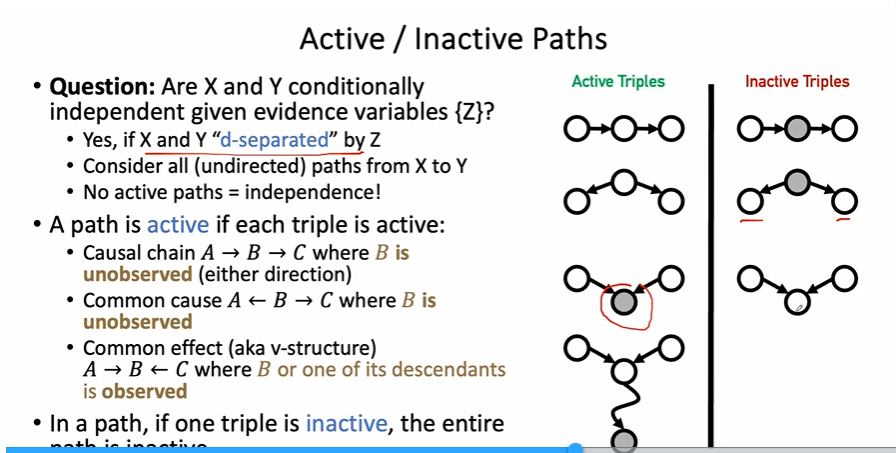Recap
- Set of nodes, one per random variable X
- Directed, acyclic graph
- A conditional distribution for each node
- Collection of probability distributions over X, one for each combination of parents’ values.
- CPT: Conditional probability table
- Chain Rule, a product of conditional probabilities
- Assume conditional independence:
Causal chains
- Low pressure causes rain causes traffic.
- High pressure causes no rain causes no traffic
- P(x,y,z) =
- Can flip them and get same result
Bayesian Networks II
D-Separation
- Determine independence by checking triples
Common Cause
- One event that causes 2 events.
- A -> B, A -> C, A is the common cause.
- It is not guaranteed B is independent of C
- It is independent if we are given A,
Common Effect
- A -> C, B -> C
- A and B are not independent given C.
- A and B ARE independent (if we are not given C)
- So, 2 causes of 1 effect
- Imagine backwards effect. Seeing C now makes A and B not independent as we can use C to explain A and B.
Active / Inactive Paths

- If all paths inactive, then conditional independence.
- If one triple inactive, that path is active.
- Check multiple paths, if one is active, then variables are not independent.